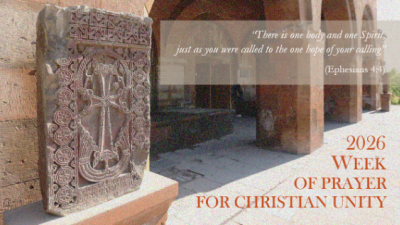
INVENTION OF THE TRUE CROSS
When we say the invention of the cross, we are not speaking of the creation of something that formerly did not exist. The origins of crucifixion by the cross dates back to the Assyrians and Babylonians. The Persians were known to use this method in the sixth century B.C. It was introduced to the Romans in the third century B.C., by the Phoenicians. Crucifixion was used as a tool for a painful and shameful execution for prisoners. For Christians, it is now a sign of glory and worship.
Invention in the sense used by the church comes from the Latin word inventio, meaning discovery or finding. In this feast, we celebrate the finding of the true cross by St. Helena in 326 A.D. More importantly, we commemorate Jesus’ life, his salvific death and Resurrection, a victory over sin and death.
For centuries, the feast was celebrated annually on 3 May. Additions to the Roman calendar moved the Feast to 7 May, a date significant in the Armenian calendar as the Apparition of the Holy Cross over Jerusalem in 451 A.D., as recorded by St. Cyril of Jerusalem. In 1960, the feast was removed from the Roman calendar and was incorporated into the Feast of the Exaltation of the Cross, celebrated 14 September. This three-fold Feast celebrates not only the finding of the true cross, but also the dedication of the Constantinian Basilica built over the sites of Calvary and the Tomb, and the return of the Cross to Jerusalem in 629 A.D., captured in the Persian conquest of Jerusalem.
The Byzantine Church celebrates this feast in union with the Western Church.
The Diocese of Jerusalem celebrates the Exaltation of the Cross on 14 September. It also retains the Feast of the Invention of the True Cross on 7 May. The Franciscan Custody of the Holy Land celebrates the Feast starting with 1st Vespers in the Chapel of the Invention, also known as the Chapel of St. Helena and marks the place where the cross was discarded after Christ’s crucifixion. It is a dry water cistern deep within the Basilica of the Holy Sepulchre.
After the celebration, the clergy and people process with the relic of the True Cross from the chapel to the Tomb of Christ. They process three times around the Tomb with the relic, which is then exposed for veneration throughout the day.
In 2021, the Orthodox Church celebrates the Veneration of the Cross on 4 April and the Exaltation of the Holy Cross on 27 September.
______________________
References
Guarrera, B. (020–05-07). The Finding of the Holy Cross is celebrated at the Holy Sepulchre. Custodia Terrae Sanctae. https://www.custodia.org/en/news/finding-holy-cross-celebrated-holy-sepulchre
Pierce, J. M. (2019, September 26). The history of the cross and its many meanings over the centuries. The Conversation. https://theconversation.com/the-history-of-the-cross-and-its-many-meanings-over-the-centuries-123316
Retief, F. P. (2003, December). The history and pathology of crucifixion. PubMed. https://pubmed.ncbi.nlm.nih.gov/14750495/
Rievallensis, A., & Rievallensis, V. A. P. B. A. (2018, May 31). The Feast of the Invention of the Holy Cross in Jerusalem. Canticum Salomonis. https://sicutincensum.wordpress.com/2018/05/21/the-feast-of-the-invention-of-the-holy-cross-in-jerusalem/






